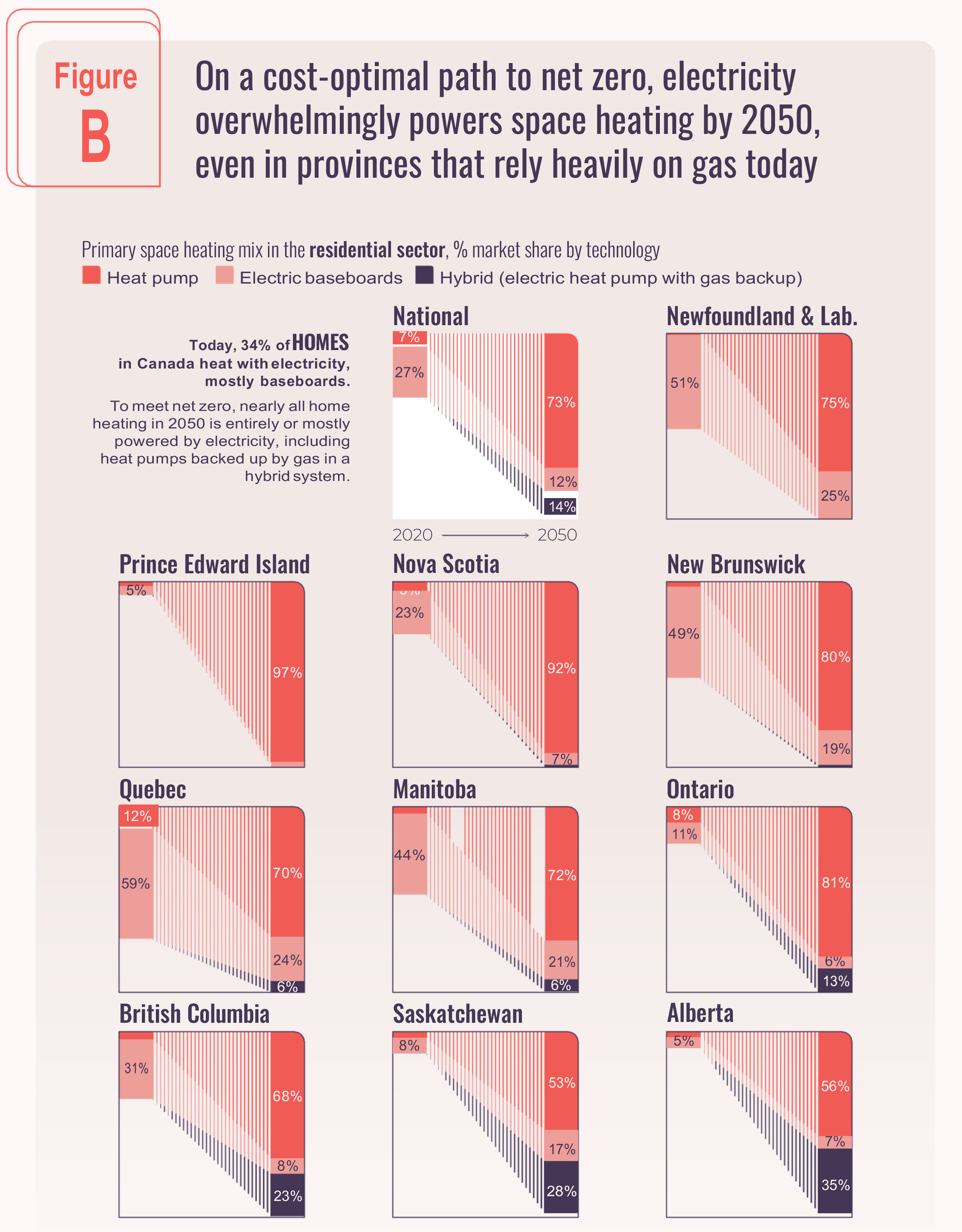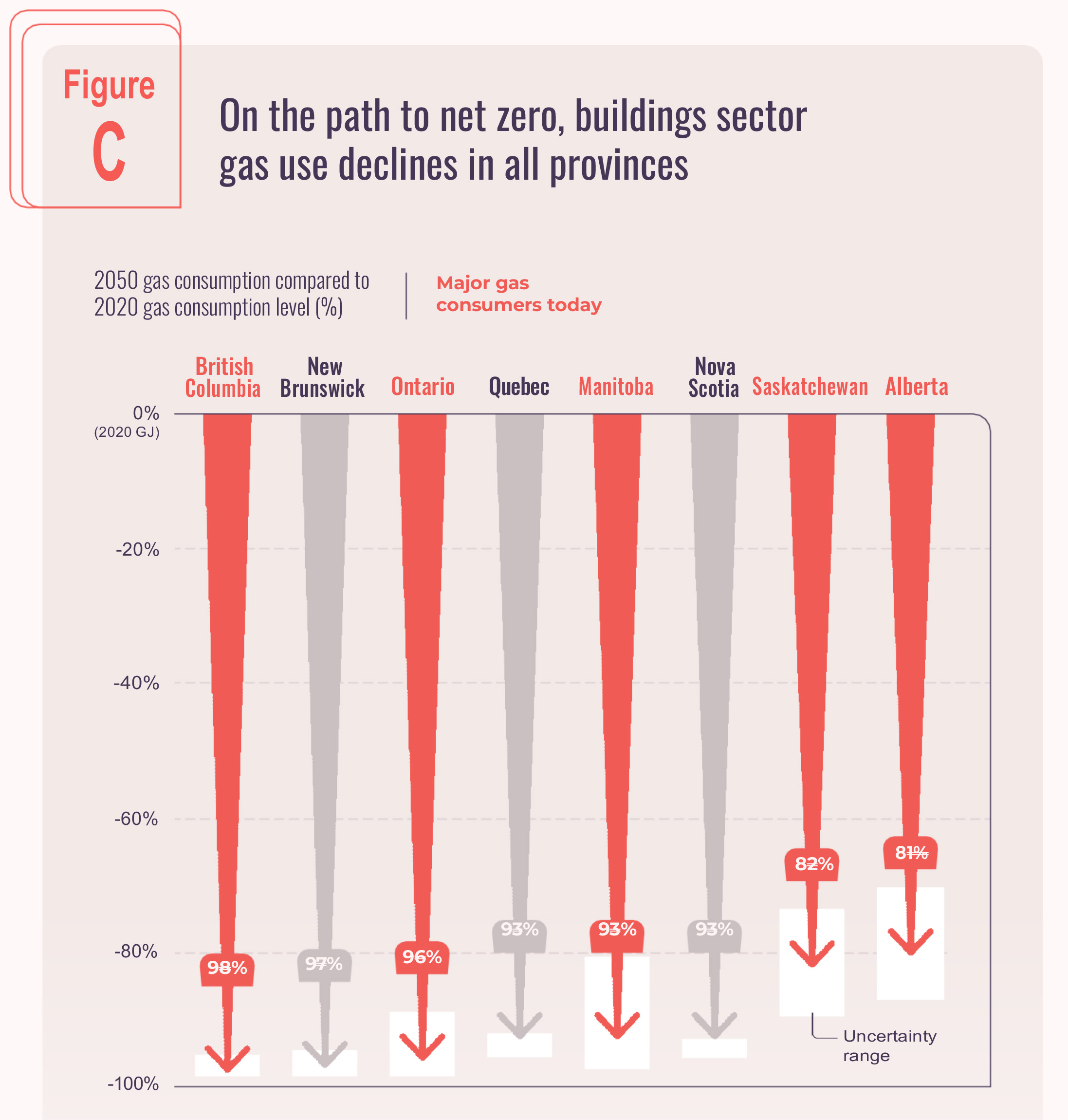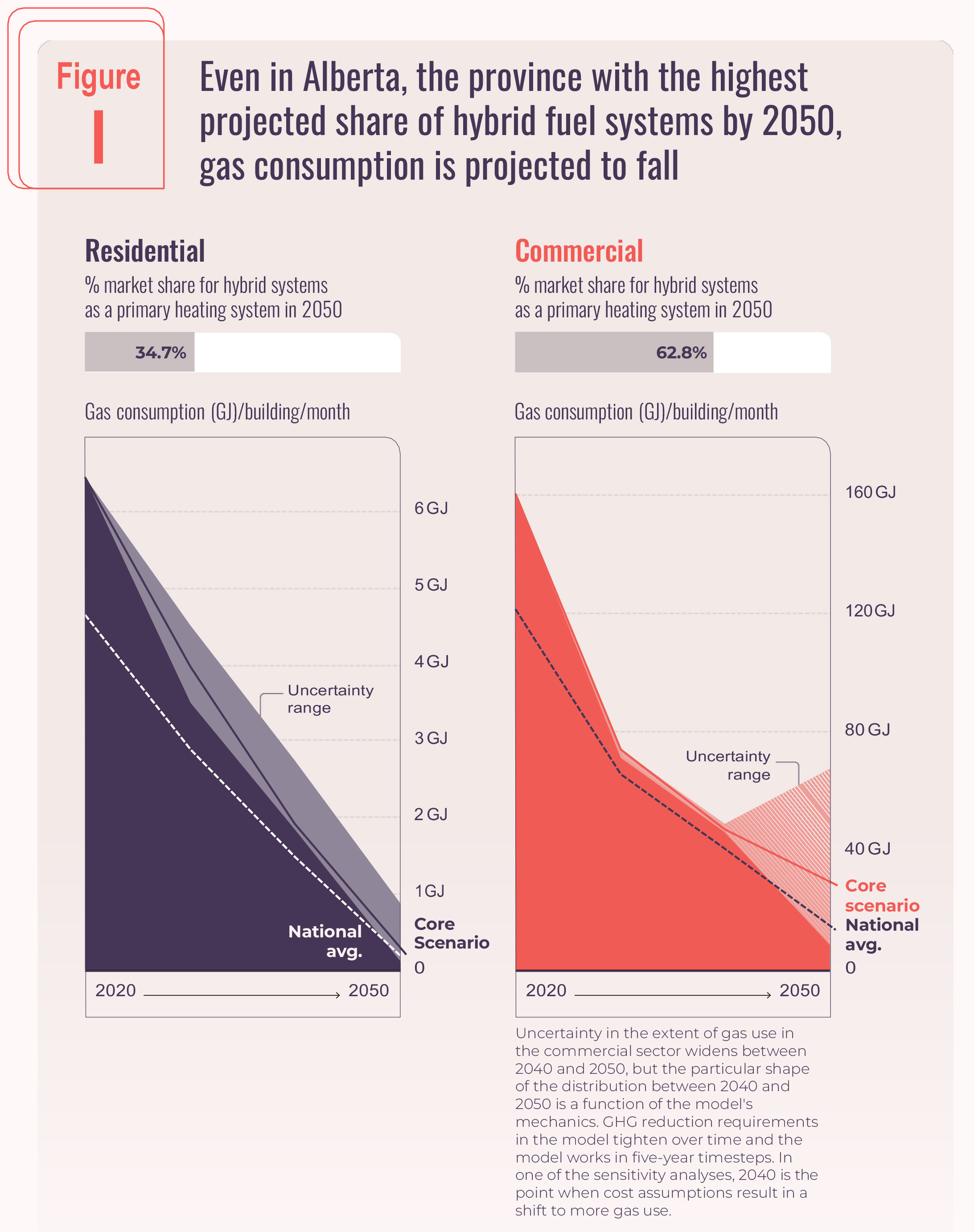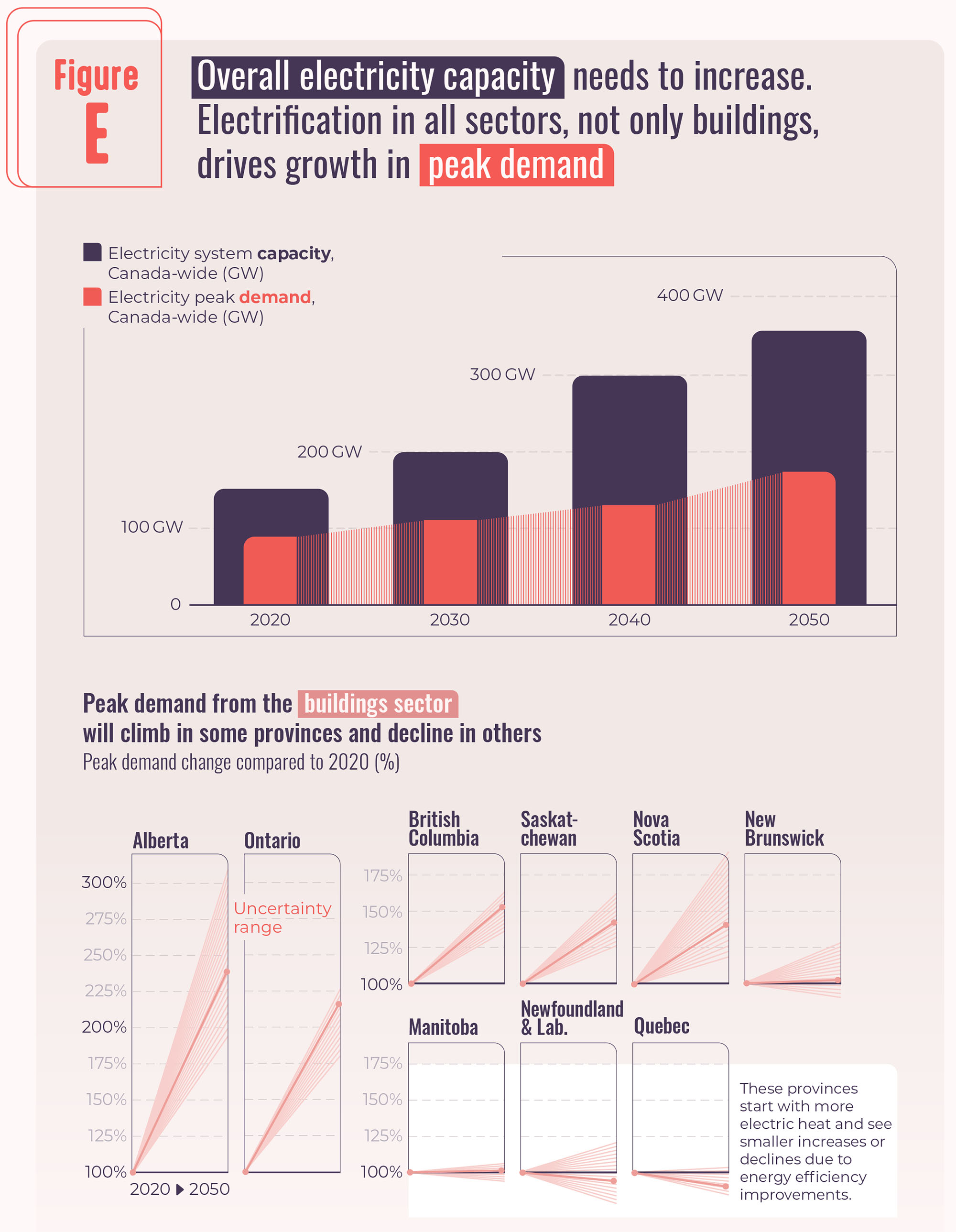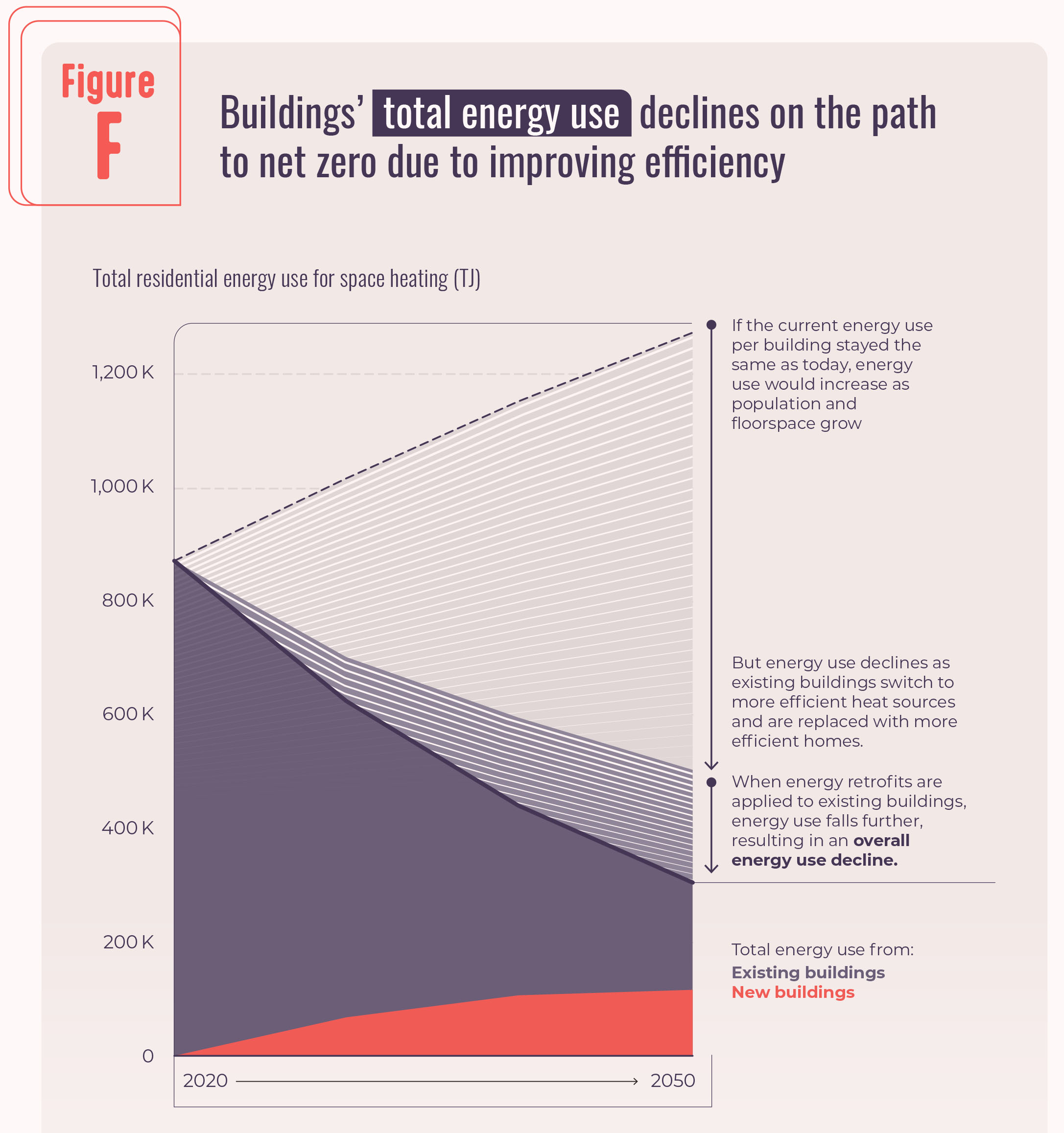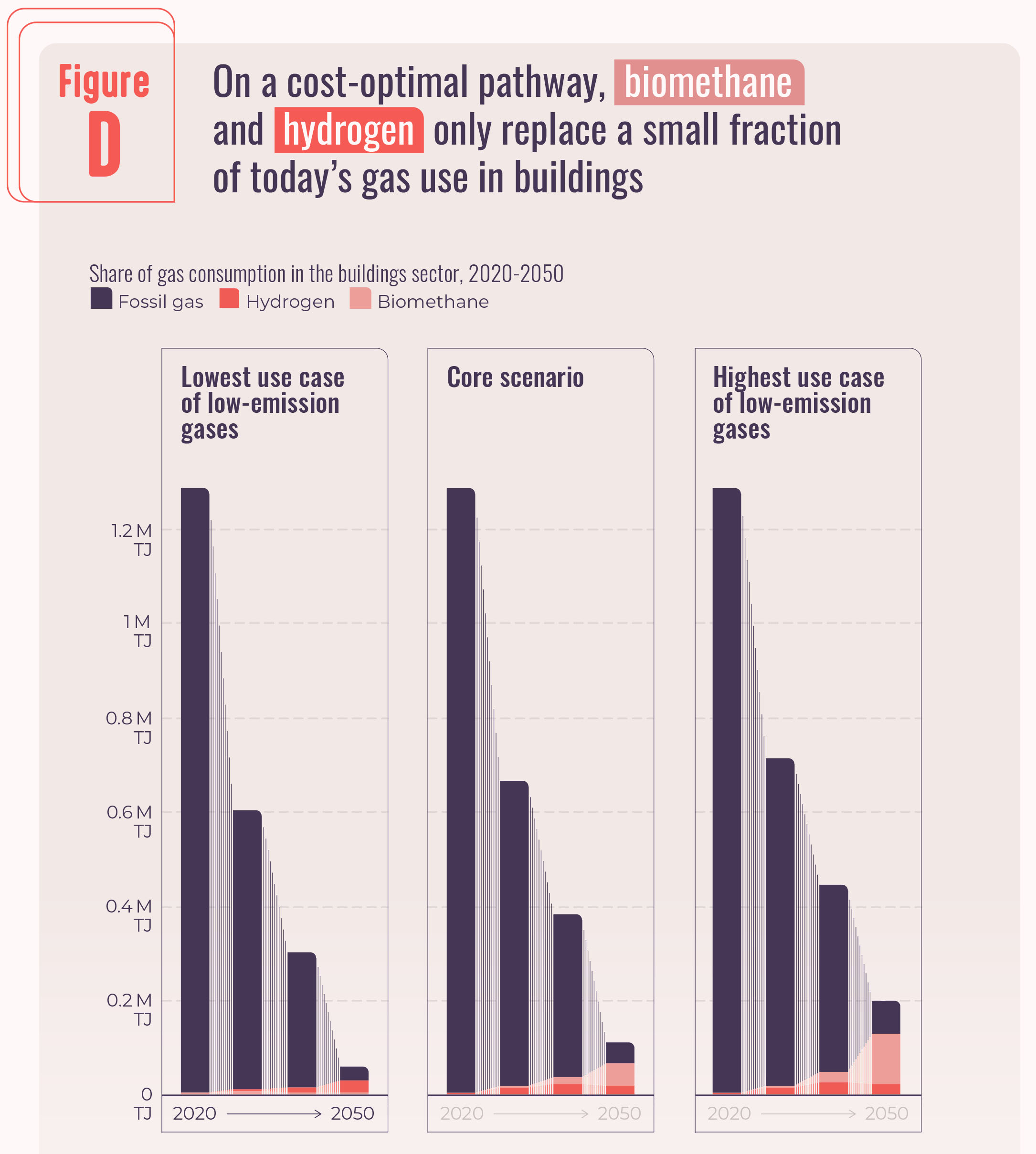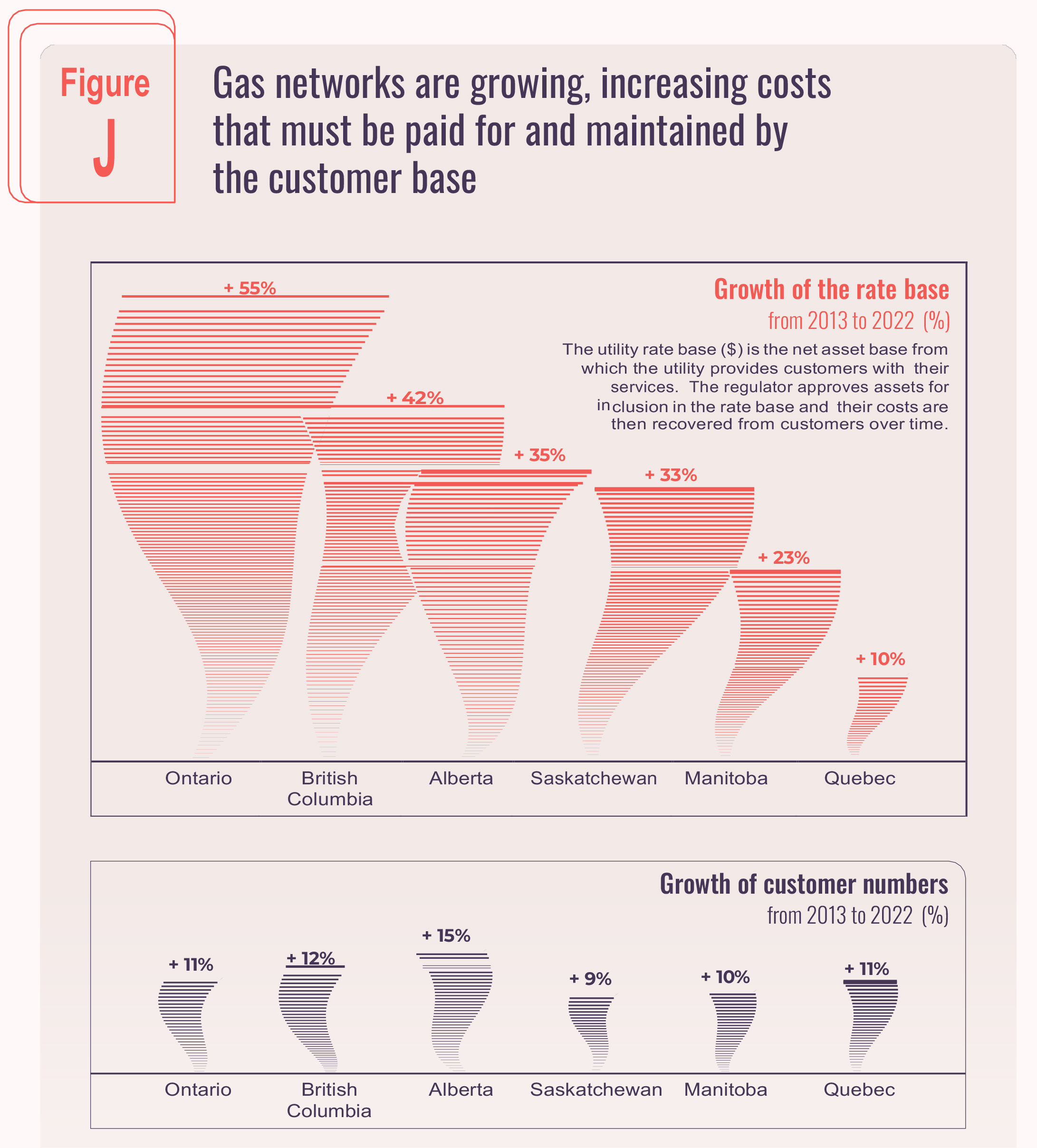
Heat Exchange
How today’s policies will drive or delay Canada’s transition to clean, reliable heat for buildings
Canada's clean energy transition means the way we heat our buildings must change—we need to use more electricity and less gas.
This has major implications for Canada’s energy infrastructure—the electricity systems and gas pipelines that deliver energy to many homes and businesses in Canada.
Provincial governments should start planning now to shift from gas to electricity—or they risk leaving systems unprepared for the energy transition, and leaving consumers on the hook for high costs.
This report is the first of its kind showing the best ways forward to protect consumers as the energy transition in Canada’s buildings sector accelerates.
Continue scrolling to explore the report’s key findings, or download the report.
Provincial differences matter
Today, provinces use different energy mixes for building heat, which affects their path through the energy transition.
The cleaner future is electric
Despite regional differences, electrifying building heat is the lowest-cost way to achieve net-zero emissions across the country.
Gas demand drops to meet net zero emissions
As Canada moves towards cleaner energy, the use of gas for heating is expected to decline significantly.
Electricity demand rises
A widespread switch to electricity requires big changes and investments in electricity systems. Managing electricity demand peaks will be a core challenge for all electricity systems across the country.
Overall energy demand falls
Retrofits, higher standards for new buildings, and energy-efficient heat pumps are central to a low-cost energy transition. Canadians could heat buildings using a lot less energy, even as the population and economy grow.
Gas use declines despite alternatives
Even factoring in hybrid systems and low-emission fuels, gas use will decline significantly to meet our climate goals in the most cost-effective way, and leave fewer connected customers to cover system costs.
Hybrid systems that use gas as a backup to electricity can be an important stepping stone to full electrification, and in some provinces they play a role in the long term. But hybrid systems won’t require significant quantities of gas. And low-emission fuels like hydrogen and biomethane are not much used for heat in a cost-effective clean energy transition—they’re more valuable to other sectors, like heavy industry.
The status quo is risky
Canada’s energy systems are on the wrong track. Gas networks continue to grow and emissions in the building sector continue to rise. Continuing with business as usual is incompatible with protecting consumers through the energy transition.
Provincial action is the missing piece
Faced with this growing risk, provincial governments need to start directing a shift from gas to electric heating infrastructure. Otherwise, they risk leaving systems unprepared for the energy transition, and leaving consumers on the hook for high costs.
Recommendations
While the clean energy transition will play out over several decades, the long-term implications of today’s investment decisions mean that governments must start now to change the status quo and protect ratepayers from the costs of dead-end pathways.
Briefing video
In this 30-minute briefing, Jason Dion, Sachi Gibson and Kate Harland walk through the main findings and recommendations of Heat Exchange.
See here for the briefing note and here for the briefing deck that Jason, Sachi and Kate present in the video.
Related publications
Heat pumps pay off
Heat pump calculator
How do Canadians like their heat pump?
Heat pumps are hot in the Maritimes: The policies and forces driving widespread uptake
Hybrid heat in Quebec: Energir and Hydro-Quebec's collaboration on building heat decarbonization
St Laurent North denied: What a decision on an Enbridge gas pipeline in Ottawa tells us about the energy transition
Change is in the pipeline—will expanding gas networks leave ratepayers on the hook?
Stay connected
Sign up to receive future research and policy analysis from the Canadian Climate Institute on building heat decarbonization.

